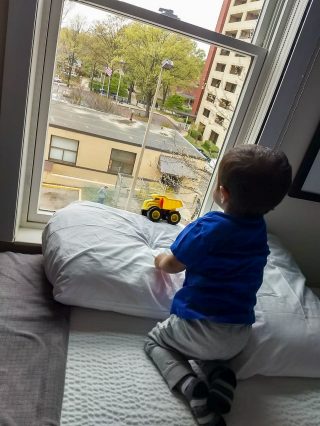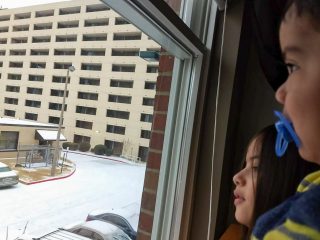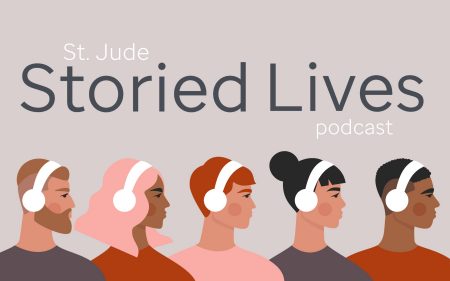
This time, isolation is easier for St. Jude family
Gloria, mother of a child with bubble boy disease, reflects on the lessons gleaned from the long isolation she experienced with her son.
English | Español

Gloria, mother of a child with bubble boy disease, reflects on the lessons gleaned from the long isolation she experienced with her son.
Nobody ever said it was fun staying quarantined with your family for months on end, but it is bearable, even rewarding. I should know. I’m the mother of a child who, for more than two years, was known as “the boy in the window.”
My son Ian was born with an extremely rare genetic disorder called X-Linked Severe Combined Immunodeficiency, also known as bubble boy disease. As the nickname suggests, patients must be rigidly protected from common germs and pathogens because they don’t have a functioning immune system. Without treatment, they usually die of routine infection before their first birthdays.
Ian, who is now 4 years old, spent two-and-a-half years in isolation before the current COVID-19 pandemic. At just 2 months in age, he came to St. Jude Children’s Research Hospital to participate in a clinical trial involving a promising new gene therapy aimed at curing the immune disorder.
At St. Jude, Ian underwent two treatments – in 2016 and 2017 – as doctors adjusted the therapy to get just the right dose. During that period, he and I stayed at Target House, the long-term lodging facility for St. Jude patients and their families.

Confined as we were to an apartment, albeit one that was very comfortable, the isolation wasn’t easy. Ian had to wear a mask and he couldn’t touch anything. His main contact with the outside world was through our second-floor window at the Target House, which is how he came to be called "the boy in the window."
During that period, I was the only parent staying with Ian – he knew his father only through a cell phone. Occasionally, when he would have health crises at the hospital, not even I was allowed near him, although doctors sometimes relented and let me in the room if he got depressed.
Our mantra during that period was always “one day at a time,” and it helped us persist.
We got through our isolation fine. Thanks to the gene therapy, Ian’s immune system mostly reconstituted itself, although he still hasn’t been cleared to get normal childhood vaccinations.
He got to come home here to Mexico and live with his family – me, my husband and his big sister – like any normal kid. He even went to school.
Compared to the period Ian and I were isolated, the quarantine forced by the COVID-19 pandemic has been easy. Without that experience, however, it would have been super-difficult.
One thing I learned during the earlier confinement is to cherish time with loved ones. People say that time never comes back, but the time you spend with your family – that is priceless. That is what you need to have. We were used to being able to say, "Well, let’s go on a vacation," and then just pick up and go. But the time you spend with your family – even if it’s just at home – is what counts.
This quarantine has been easier for Ian, too. He can go out in our yard and play by himself or with his sister. He has a two-story house to roam around in, and we make sure he burns all that energy that a 4-year-old has. He colors, paints and draws for school projects.
Ian knows he is not allowed to have contact with anyone but us. But he also knows that this time everyone is subject to confinement. He’s learned about the coronavirus, and he knows it has nothing to do with him, with some condition he was born with.
Hopefully, he has learned, as we have, that time with family is something to be cherished, not merely endured.





